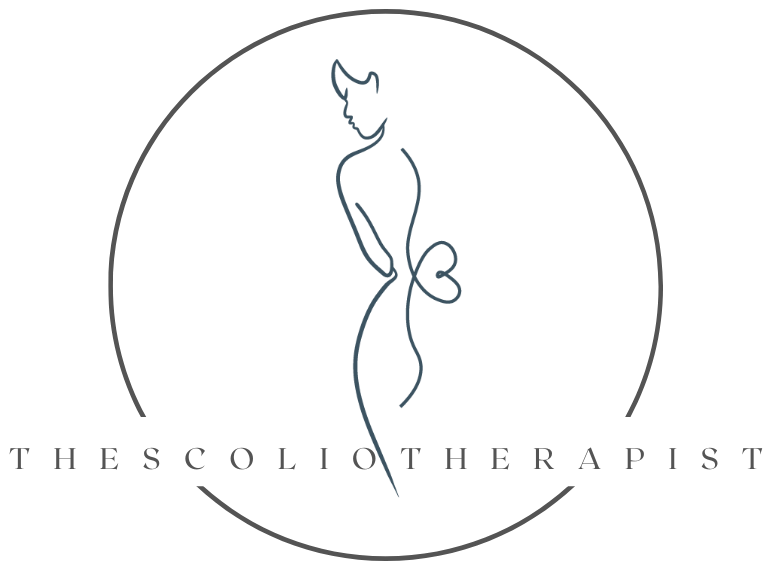Scoliosis Exercises: Finding Safe and Enjoyable Cardio Workouts
Most of us immediately picture the spine when we think about scoliosis. But the truth is that scoliosis impacts your whole body — not just your back. We’ve talked before about the links between scoliosis and the digestive and lymphatic systems. And now, we’ll look at how your curve impacts your cardiovascular system.
The unique shape and severity of your curve determine how much it impacts your cardiovascular system. For example, the lung on your concave side might be compressed more than the one on the convex side of your curve, so it doesn’t inflate as much when you breathe. Scoliosis can also impact the diaphragm, making it harder to drop down properly during the inhale.
Scoliosis-Specific Exercise Should Include Cardio
Many scoliosis resources focus on corrective exercises and tend to neglect cardiovascular health. Of course, stretching, scoliosis-specific exercises, and auto-corrections are crucial, but maintaining your cardiovascular fitness is just as important!
Why? Cardio workouts can help counteract some of those common issues discussed above, such as reduced lung capacity. And regular exercises (especially higher-impact workouts) can help improve bone density, increase muscle mass, and reduce the risk of osteoporosis. This is especially important for scoliosis patients because they have a higher risk of osteoporosis. (Our podcast episode has more details.)
Are Scoliosis Patients Limited to Low-Impact Exercise?
We frequently hear that scoliosis patients should stick to low-impact exercises to avoid creating too much stress on the spine. However, this isn’t necessarily true.
Medium- and high-impact exercises can be performed safely with scoliosis. And more importantly, these exercises benefit all parts of the body, so it’s important to incorporate them into your workout routine.
Of course, every scoliosis case is different, and high-impact cardio exercises may not be right for you. However, even lower-impact cardio workouts can be beneficial. For example, walking can improve bone density, which is crucial if you have scoliosis and/or osteoporosis.
High-Impact Cardio Exercises That Are Safe for Scoliosis Patients
Here are some high-impact exercises that are generally safe even if you have scoliosis:
Running
Plyometric exercises (e.g., jump-roping)
Dancing
It’s important to talk with a healthcare professional to determine which exercises are safe and beneficial for you.
Along with building bone density and muscle strength, high-impact exercises can also help promote spinal stability and alignment. High-impact training also improves your cardiovascular health, and it even helps promote healthy lymphatic flow.
Low-Impact Cardio Exercises That Are Safe for Scoliosis Patients
If high-impact exercises aren’t recommended for you (or you just don’t enjoy them), there are plenty of lower-impact exercises that still offer a great cardio workout.
Bike riding/spinning (I love my Peloton!)
Lap swimming
Walking
I recommend walking to all my clients. It improves cardiovascular health, relieves stress, lowers blood sugar, and improves mood. Walking has an extremely low barrier to entry (no special equipment needed!), and any level of walking will offer benefits over no walking.
And let’s be honest, most of us can squeeze in at least a 10-minute walk each day! An outside walk is nice because you get fresh air and sunshine, but walking around inside your house is great when the weather is bad.
Making Cardio More Comfortable
If you tend to avoid cardio workouts because they aren’t enjoyable, I understand! Many of my clients have expressed similar feelings. But if you’d like to get the benefits of cardio, there are some things you can do to make these workouts more comfortable:
Performing expansive breathing exercises before your workout
Cooling down properly after the workout
Doing some gentle stretches
Performing spinal elongation exercises (e.g., using a pullup bar) after exercising
Taking the time to properly warm up and cool down can help your body recover faster and help you de-rotate your spine so you aren’t exacerbating your scoliosis symptoms.
Daily Habits Are the Key to Managing Scoliosis
Exercise is important for everyone, and it’s especially beneficial if you have scoliosis. Contrary to popular belief, many high-impact exercises are safe for scoliosis patients — and they offer significant benefits for your bone density and heart health. No matter which type of exercise you choose to do, remember to warm up and cool down properly to minimize the risk of injury and promote better recovery.
Developing a cardio exercise routine is important, but don’t forget about your scoliosis exercises. One of the best ways to reduce pain and support your spine is to incorporate small improvements into your daily routine. That’s what I teach you to do in my Scoliosis Movement Bootcamp! This 6-month online program includes educational materials, video tutorials, and practical tips to help you feel better in your daily life. Join the Scoliosis Movement Bootcamp for less than the cost of an X-ray!
If you want more information on scoliosis and how to reduce pain and other symptoms, listen to my podcast, Ahead of the Curve. Subscribe to get every episode when it airs!
Resources Mentioned
Ahead of the Curve, Episode 41: Osteoporosis and Scoliosis, What You Need to Know
